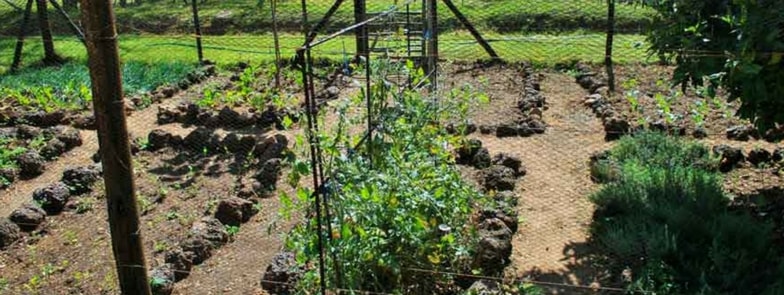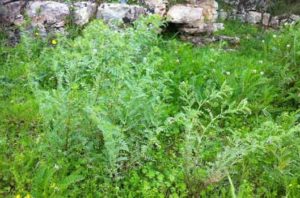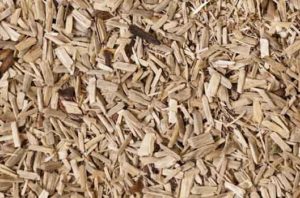Aridoculture and territory. A cue for responsible water management.
it is an article by Ergane – ergane.org
Water management in agriculture is a major challenge for modern society.
Since ancient times the fertility of the soil and the presence of water have allowed the development of human civilizations. A rich soil brought nourishment to people and animals. In ancient times, great attention was paid to the management of water for irrigation: think about the Nile and ancient Egyptian lands worked.
At present, the needs imposed by the market induce small and large growers to exploit water more and more wickedly. It is estimated that in Italy more than 50% of water withdrawals are intended for irrigation purposes. Our agricultural productivity per hectare in terms of water withdrawals is the lowest among European ones. With Spain, Italy is the country that records the highest rate of water resources available, and most irrigation systems are raining. This means higher water waste, since it is understood that surface watering, especially when applied in the hottest hours of the day, as is often the case with large agricultural industries, produces a fast evaporation of water.
Agriculture and industry largely consume drinking water that often returns polluted and are the sectors that pay the lowest rates for drinking water use. The problem is clearly linked to the current economic-social model, so there is no product seasonality or territorial context, in that large-scale agricultural production, like a real food industry, does not take into account climate, temperatures , soil or other factors that could determine a specificity of production, but essentially focuses on the intensive production of standard food to feed the global market of the undifferentiated product.
Irrigation is an indispensable practice for agriculture, however it can be used according to a precise programming and balance of water availability in the soil. There are many strategies to reduce water waste in agriculture, it is enough to look back at our past and take the lead in improving future techniques.
For example, in our territory (Apulia, Italy), which has always been characterized by hot and slightly rainy summers and relatively mild winters, agricultural production in the past was essentially based on low-water crops. Today we talk about aridoculture to refer to those strategies implemented for decades by our ancestors, without any other means than direct observation of the context and the empirical evaluation of available resources. In Permaculture, sustainable and resilient ecosystem design, “Observe and Interact” is the first principle to be respected in order to be able to design in the respect of nature and without energy waste. This same approach allowed in the past to obtain more than satisfactory harvests, with zero use of manual irrigation techniques.
Aridoculture prefers, in fact, cereals, legumes and other varieties with autumn-spring cycles. In this way, the rains and the lowest temperatures are linked to this time of year: black chestnut, cicerchia (like fava bean), white beans and hemp are just some of the typical cultivations, without forgetting the olive and the vine. The production of other more needy irrigation crops must not, of course, be eliminated by our imagination, but we can think of reducing domestic and non-large-scale production and triggering other water-saving, interconnected and equally effective strategies.
For example, the use of drop irrigation systems in combination with mulching. The drip system avoids water waste because it is based on the principle of water distribution close to plant roots, in the quantity and frequency most suitable for the growth phase of the crop. Mulching, on the other hand, consists in creating a layer of 20-30 cm of straw or other organic material that acts as a constant cover for the cultivated soil, thus greatly reducing the evaporation of irrigation water and the soil is protected by direct sunlight.
There is another strategy, very similar to mulching, which is based on the use of straw of branches and raws, previously smudged and processed into chips. The BRF method, which is based on Bois Ramèaux Fragmentès (chopped fresh wood), was conceived in France by Professor Gilles Lemieux and provides full coverage of the cultivation soil with a layer of 20 cm of short chips with a diameter of less than 3 cm. Chips favor and, if necessary, recreate the biological activity of the soil (fungi or mushrooms, microflora, animal microorganisms), improves the structure of the soils, but also the power of water retention. It is essentially based on the symbiosis of mushrooms / lignin, an organic chemical component present in all plants. The mushrooms are the only ones able to biotransform lignin, digesting its enzymes and thus producing stable humus. Lignin and mushrooms have unique properties and characteristics, which make them a decisive pair for the origin of soils and yet we still know little.
Water management in agriculture is a major challenge for modern society. Lack of responsibility in the management of water resources in agriculture is much more dangerous than improper use of domestic water. Experimenting new, interconnected strategies, looking at their territorial context is the starting point for a truly sustainable agricultural model that changes the horizon of anticipation and improves the starting conditions of future generations.



Lascia un commento